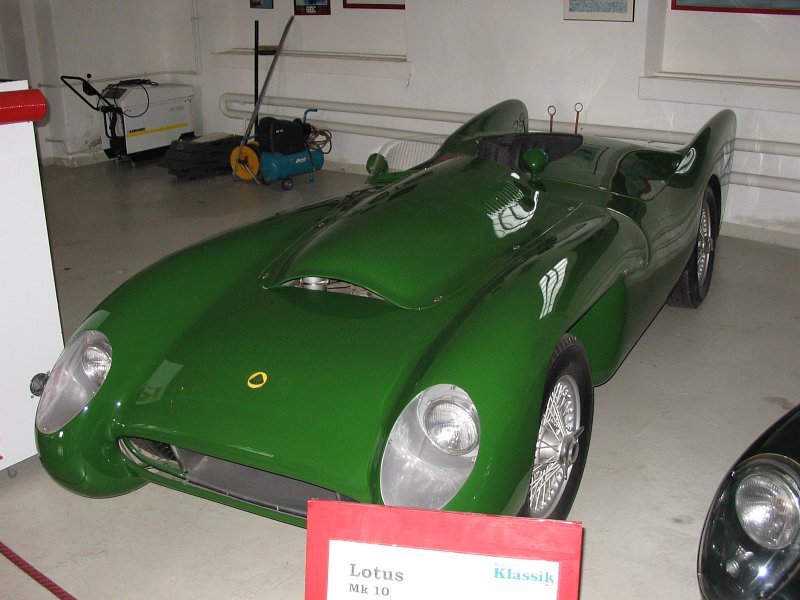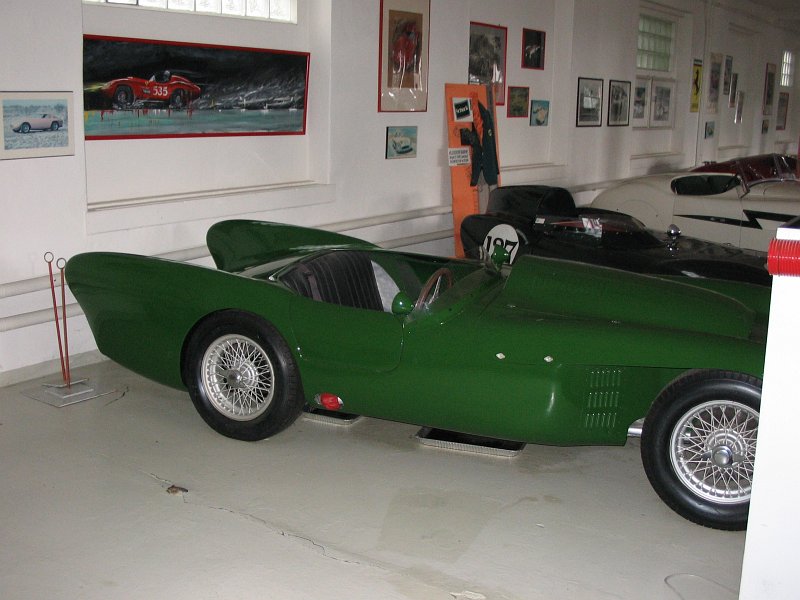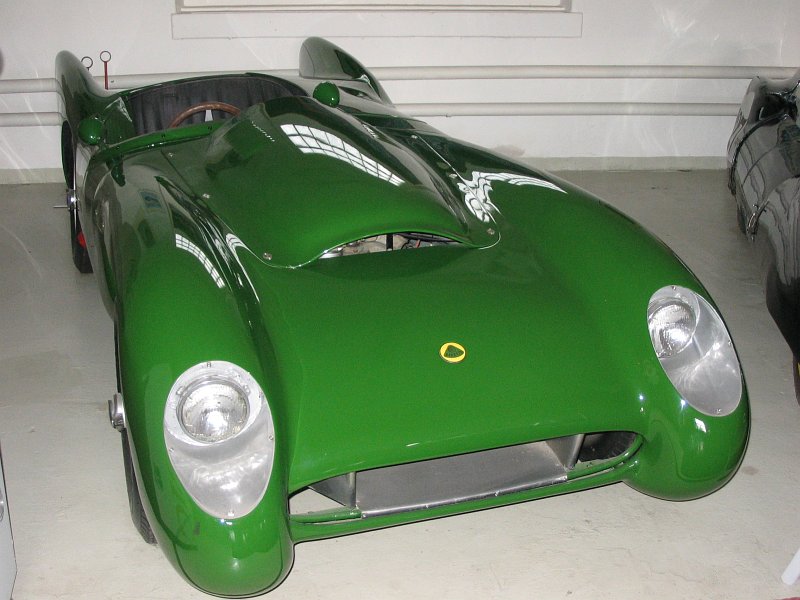Description
The Lotus Mark 10 was introduced in 1955 as a natural development of the Mark 9 and represented Colin Chapman’s ambition to take Lotus into the larger-capacity sports-racing category. Whereas the Mk 8 and Mk 9 had focused on smaller-displacement engines and lightweight efficiency, the Mk 10 was designed to compete against the more powerful Jaguar D-Type, Aston Martin DB3S, and Ferrari sports-racers of the mid-1950s. It was essentially a larger, more muscular evolution of the same aerodynamic and structural philosophy — lightness, rigidity, and low drag — applied to a car capable of accommodating engines of up to 2.0 litres.
Like its predecessors, the Lotus Mk 10 was built around a tubular steel spaceframe chassis, designed by Chapman to be as light and stiff as possible. The frame was a scaled-up version of the Mk 9’s structure, using small-diameter tubing arranged in a triangulated configuration to provide maximum strength for minimum weight. Fully clothed in sleek, aerodynamic bodywork by Frank Costin, the Mk 10 continued the aircraft-inspired styling language established by earlier Lotus sports-racers. Its long, low nose, faired-in headlamps, smooth flanks, and tapering tail gave it a remarkably elegant and efficient profile. The body was constructed in aluminium rather than fibreglass, helping to keep weight to a minimum while maintaining strength and ease of repair.
Power for the Mk 10 came from a range of engines depending on customer requirements, but the works car and most notable examples were fitted with a 2.0-litre Bristol straight-six — the same engine used in the AC Ace and Bristol 404. In Lotus tune, it produced around 155 to 160 horsepower, a significant output for a car that weighed less than 700 kilograms. The engine was mounted far back in the chassis to optimise weight distribution and paired with a close-ratio four-speed gearbox. The combination of strong power, exceptional aerodynamics, and low mass allowed the Mk 10 to reach top speeds in excess of 140 mph, placing it firmly among the front rank of mid-1950s sports-racers in terms of outright performance.
The suspension layout followed Lotus convention: double wishbones with coil springs and dampers at the front, and a live rear axle located by trailing arms and a Panhard rod. Braking was by large Alfin drum brakes on all four wheels, which, combined with the car’s lightness, provided excellent stopping power and resistance to fade. Chapman’s relentless pursuit of low weight and ideal balance made the Mk 10 one of the best-handling large-displacement sports cars of its era, offering superb agility and precision even when compared with far more powerful opposition.
The Mk 10 made its debut during the 1955 season and was entered in a number of high-profile sports-car races, though it was built in very small numbers and remained effectively a works experiment rather than a full production model. Colin Chapman himself raced the car at various British events, including appearances at Silverstone and the Goodwood Nine Hours, where it showed flashes of impressive speed but was often hampered by reliability issues typical of small constructors taking on established factory teams. Despite limited competition success, the Mk 10 demonstrated that Lotus could design a chassis capable of handling larger engines without losing the delicacy and responsiveness that defined the marque’s smaller cars.
The car’s visual design was among the most beautiful of the early Lotus era, combining Costin’s aerodynamic purity with a more muscular stance. Its flowing proportions and long tail reflected the aerodynamic research that Lotus was increasingly applying to all of its racing projects. In many ways, the Mk 10 bridged the gap between the lightweight, small-capacity sports cars of the early 1950s and the more sophisticated, mid-engined designs that would define Lotus in the following decade.
Only a handful of Mk 10s were built — likely no more than three — making them among the rarest of all early Lotus models. Each was slightly different in detail, reflecting the experimental nature of the programme. The lessons learned from the Mk 10’s chassis and aerodynamic development directly influenced later Lotus competition cars such as the Mark 11, which achieved far greater international success, including class victories at Le Mans.
Today, the Lotus Mark 10 is remembered as a crucial transitional design — a bold attempt by a still-young company to challenge the great factory teams on their own terms. It demonstrated that Chapman’s principles of lightness and aerodynamic efficiency were scalable beyond the small-capacity classes and could deliver competitive performance even against larger, more powerful rivals. Though it enjoyed only limited competition exposure, the Mk 10’s design and engineering represented an important milestone in Lotus history: the moment when Chapman’s small, innovative workshop began to think and build on a truly international level.



